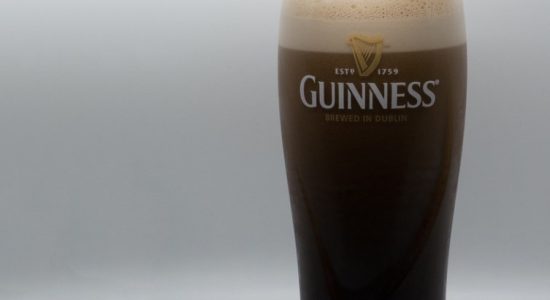What Is Honey Beer? & (How it’s made!)

The world has about a dozen broadly classified types of beer, and each of these categories has several varieties. In the United States alone, almost 9,000 breweries make around 50 types of beer, including honey beer.
So, what exactly is a honey beer?
Honey beer is a type of specialty beer made by brewing an ale or lager with some honey. A honey beer can have varying ABV (alcohol by volume) and IBU (international bitterness units) depending on the type and quantity of honey and the specific brewing process.
Honey beer may use any popular unmalted or malted grain, i.e., barley, corn, or wheat. But honey is a functional ingredient in these specialty beers, not a brewing adjunct. Keep reading as I explain what honey beer is, its taste, and the differences from other popular brews.
Read Also: What is Wheat Beer?
What Is Honey Beer Made From?
Honey beer is made from a grain-based malt like barley, rye, wheat, or corn, water, hops, and honey. The brewer’s yeast used for fermentation depends on the type of honey beer, such as ale or lager. Also, some types of honey beers contain herbs and spices.
Since honey beer is a specialty brew, there is no industry-wide classification or any regulatory standards defining the fermentation process and the proportion of malt and honey. Therefore, you are likely to find distinct types of honey beer with varying flavors, aromas, and textures.
These variations in flavor profile, aroma, and texture depend on how you make a honey beer.
Also, the brewing recipe and fermentation process determine a honey beer’s color, sweetness or bitterness, and alcohol content.
How Is Honey Beer Made?
Honey beer is made by adding honey to a brew during the boiling or fermenting stage. It is also possible to carbonate a beer using honey instead of the priming sugar. The exact method and the type and quantity of honey determine the beer’s characteristics.
Natural honey is a flavoring, sweetening, and aromatic ingredient. Brewers add honey at distinct phases of the brewing process to impart varying sweetness, flavor, texture, and aroma.
There are five critical junctures when you can infuse a brew with honey:
- As the wort starts to boil.
- When the wort is already boiling.
- Towards the end of the boil.
- During the fermentation process.
- After the fermentation to carbonate.
As you may imagine, each of these five approaches will lead to as many different honey beers.
For instance, if you add the honey as the wort starts to boil, there will be almost no honey left by the time you go to fermentation. The ~80% sugars in honey may ferment in the entire process.
In effect, you can derive a significant alcohol content from the honey’s fermentable sugars. But the beer may not have any pronounced flavor, texture, or aroma of honey. In other words, you won’t have a honey beer.
In contrast, infusing a brew with honey in the last leg of boiling or later during fermentation will have the desired sweetness, flavor, aroma, and texture. However, the eventual characteristics of the beer will also depend on the type of honey, quantity, and other variable factors, such as hops.
Read also: What is Sweet Beer?
What Does Honey Beer Taste Like?
Honey beer tastes like a sweeter, smoother, and more aromatic ale or lager. Some honey beers may have a unique flavor if they contain herbs and spices. Also, a honey beer may have a light or delicate, medium, heavy-bodied, or strong taste, depending on the recipe.
The United States has over 300 types of honey. Among them, only 10 types or so are used to make honey beer.
These honey varietals are:
- Alfalfa
- Blueberry
- Buckwheat
- Clover
- Industrial blended
- Orange blossom
- Raspberry
- Sage
- Tupelo
- Wildflower
Clover honey is more popular among brewers than the others, followed by alfalfa, wildflower, and buckwheat.
Apart from the type of honey, its proportion and when it is used in the brewing process influence the eventual flavor and aroma. Also, most brewers process the honey to prepare it to endure the high temperatures if the infusion happens during the boiling phase.
Honey has around 600 organic volatiles.
Subjecting any type of natural honey to high temperatures during boiling can lead to the loss of organic volatiles. Therefore, the beer will not have much of the characteristic honey flavor, sweetness, aroma, and texture.
Honey Beer vs. Mead vs. Braggot
The dozens of beers with scores of variations can perplex anyone. A lager vs. pilsner discussion is a cakewalk for connoisseurs, and brewers can easily tell a porter from a stout.
However, specialty beers, meads, and mixed or blended beverages may be confusing.
For instance, some brewers mix mead and beer or vice-versa and call it a braggot, which can lead you to think that a braggot is a honey beer or the other way around. But a honey beer is not a braggot.
Here’s why:
- Mead is not a beer.
- Mead is already a fermented and aged beverage.
- Mead is not a functional ingredient or brewing adjunct in making honey beer.
- A braggot mixes mead and beer that are finished products.
- The mead has the honey in a braggot, not the regular beer.
The fermentation of honey to produce mead is similar to winemaking. In contrast, honey is used in the brewing process to make this specialty beer. Therefore, a mead and beer hybrid known as braggot is not the honey beer made through the standard brewing process.
The differences aside, all three drinks can be delicious in different ways when done right.
Conclusion
To sum it up, honey beer is a specialty beer infused with honey in a certain proportion, which is added during the brewing process at a preferred stage. Also, brewers use various types of honey to make this specialty beer.
Plus, some brewers add herbs and spices for a distinct flavor, aroma, and texture.
A honey beer tastes sweeter, fuller, or rounder and thus smoother than regular ales and lagers. Some honey beers are bolder with a heavy-bodied taste. Like meads, you can make honey beers at home. But honey beer is not a mead, braggot, or post-facto hybrid beverage.






